Getting Octal File Permissions from Command Line in Linux For the sake of being thorough, we'll briefly discuss getting octal permissions values in the Linux world as well, where you can use the following to get the octal file permissions stat c "%a %n" /Path/To/File You can also more simply use the stat c command stat c %a /Path/To/FiletxtThe chmod system call cannot change their permissionsCommand Examples chmod The chmod command can be used with either a textbased argument or 3 octal digits (see note 1) to change the permissions on a fileAn example of the textbased command to add "read" permission for group members and others to a file named foo is /home/user> ls l foorwxx 1 user user 78 Aug 14 1308 foo /home/user> chmod gor foo /home/user> ls l foorwxrxr 1

Chmod Octal Chart Zerse
Chmod octal permissions
Chmod octal permissions-Sudo chmod 777 myFiletxt g The chown command is used to change ownership of a file or directorySudo chmod 777 myFiletxt g The chown command is used to change ownership of a file or directory
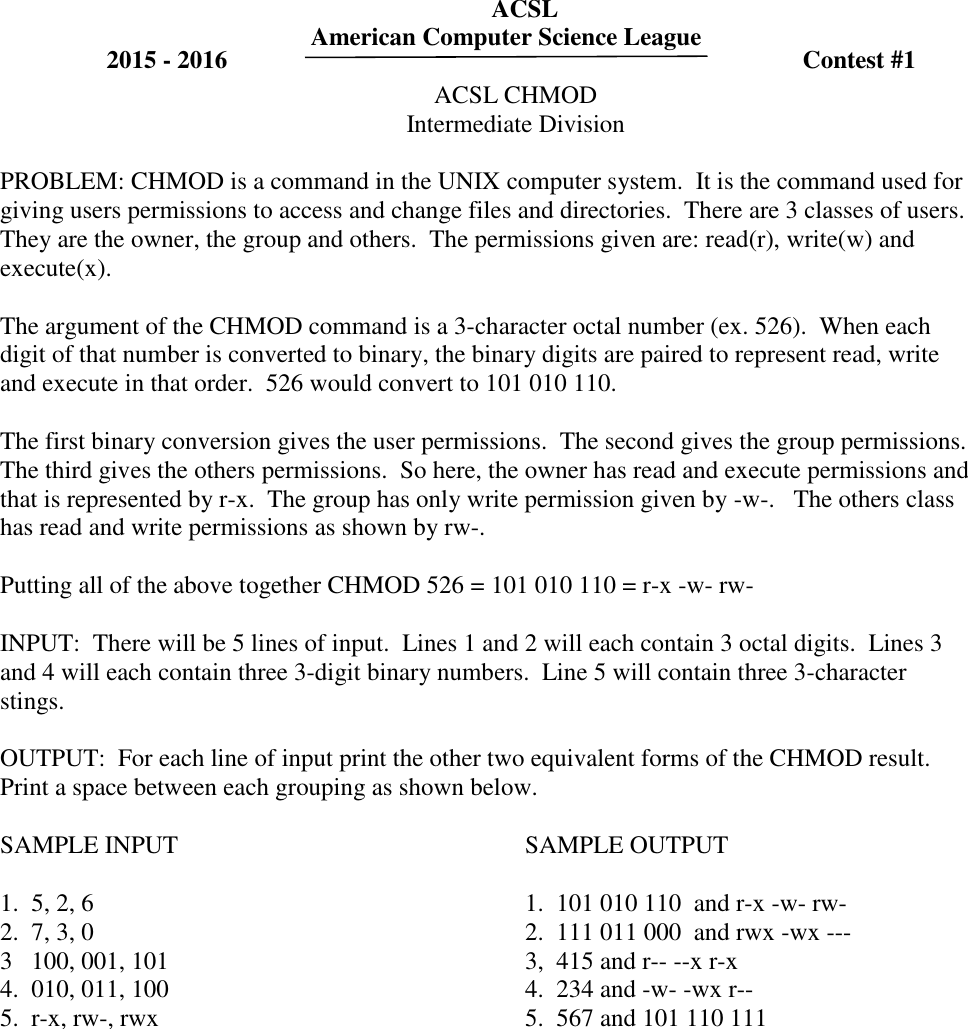


Instructions
To change file permission chmod command is used chmod command is categorized into three categories user group other the command can be specified in either of two ways 1)relative permission 2)absolute permission 1)relative permission In relative permission it changes the permission specified in command and leave other permission unchanged syntax chmod categorization permission filenameTherefore, the chmod 665 myFiletxt command changes the permissions to Owner rw (6 or 110 in octal) Group rw (6 or 110 in octal) Other rx (5 or 101 in octal) What command would change the permissions of myFiletxt to rwxrwxrwx, granting any user in the system full access to the file?0060 means that users in the same group have read/write permissions on files at the same time, but do not have execute permissions
Here is the equivalent command using octal permissions notation chmod 754 myfile Here the digits 7, 5, and 4 each individually represent the permissions for the user, group, and others, in that order Each digit is a combination of the numbers 4, 2, 1, and 0 4 stands for "read",Numerical permissions The chmod numerical format accepts up to four octal digits The three rightmost digits define permissions for the file user, the group, and others The optional leading digit, when 4 digits are given, specifies the special setuid, setgid, and sticky flagsThe chmod ("change mode") command is used to change the permission flags on existing files It can be applied recursively using the "R" option It can be invoked with either octal values representing the permission flags, or with symbolic representations of the flags The octal values have the following meaning
Applying Permission Using Octal number Hence Following work same like chmod rwx file_name chmod 777 file_name And chmod 775 file_name chmod ugrwx,o=rx file_nameUsing chmod command to set file & directory permissions Having looked at the file permissions and how to view them, let's no focus on how to modify these permissions The chmod command in Linux is used to change file and directory permissions using either text (symbolic) or numeric (octal) notation It takes the following syntaxPermissions can be presented either in numeric (octal) or symbolic notations For example 764 or rwxrwr, respectively The leftmost set/triad, in this case 7 or (rwx), defines user/owner (u) permissions, the second from the left 6 or (rw) group (g) permissions, and the rightmost 4 or (r) permissions for others (o)



Linux File Permissions And Ownership By Udara Bibile Level Up Coding



M03t3 2 Intro To Linux Chmod Octal Permissions Youtube
# chmod or file2 This example removes () the read (r) permission from others (o) for file2Here's another simple exampleAn octal number can represent various combinations of these three permissions For example, 0070 means that users in the same group have read/write/execute permissions on files at the same time;This command will give read, write and execute permission to the owner Group and others will have no permissions, not even read chmod 700 /path/to/file chmod 666 No one executes To give owner, group and everyone else read and write permission on file chmod c 666 /path/to/file chmod 644 Everyone can read, only owner can write
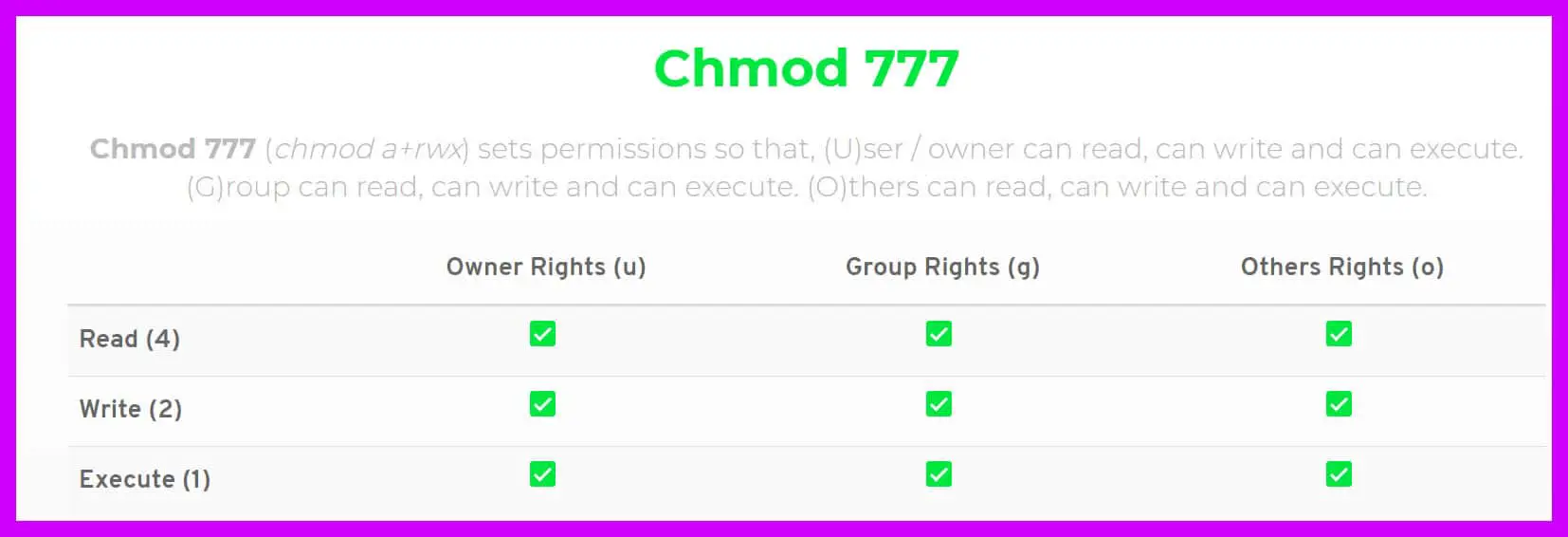


Chmod 777 A Definitive Guide To File Permissions



File Permissions In Linux Unix How To Read Write Change
0060 means that users in the same group have read/write permissions on files at the same time, but do not have execute permissionsChmod Calculator is a free utility to calculate the numeric (octal) or symbolic value for a set of file or folder permissions in Linux servers Check the desired boxes or directly enter a valid numeric value (eg 777) or symbolic notation (eg rwxrwxrwx) to see its value in other formatsAnd the fourth for other users not in the file's group, with the same values chmod never changes the permissions of symbolic links;



New Bash Linux Cheat Sheet Wallpaper Download Free 40 X 3050px



Chmod In Unix C Programs
An essential program that benefits from using octal notation is the chmod command Using the Chmod Command The most popular way of changing a file's permissions is by using octal notation with the chmod command We will practice by creating an empty file in our home directory cd touch testfileChmod 775 Chmod 775 ( chmod arwx,ow) sets permissions so that, (U)ser / owner can read, can write and can execute (G)roup can read, can write and can execute (O)thers can read, can't write and can execute Owner Rights (u)An octal number can represent various combinations of these three permissions For example, 0070 means that users in the same group have read/write/execute permissions on files at the same time;



Linux File Permissions Tutorial For Beginners



File Security And Access Control Ppt Download
Using octal representation For changing file permissions, you can either use octal representation (numeric), or symbolic representation (the letters) In octal representation, the first digit is for the user, the second digit is for the group, and the third digit is for othersWhen we set setuid to a file, we do the following in the terminal chmod us filename This works fine But the octal number 4000 is always associated with setuid (in books etc) I understand (to some good extent) file permissions, the concept of umask, setuid and using octal numbers with chmodBut I still cannot figure out the relationship between the octal number 4000 and setuidThese octal values, can be used to change or manage a file or directory's permissions, using a well known commandlineutility called chmod Obtaining a specified "Octal Value" usually starts with a file's "Symbolic Value", and transmuting it to it's corresponding number value In this case, xxx converted to it's Octal or Number value is
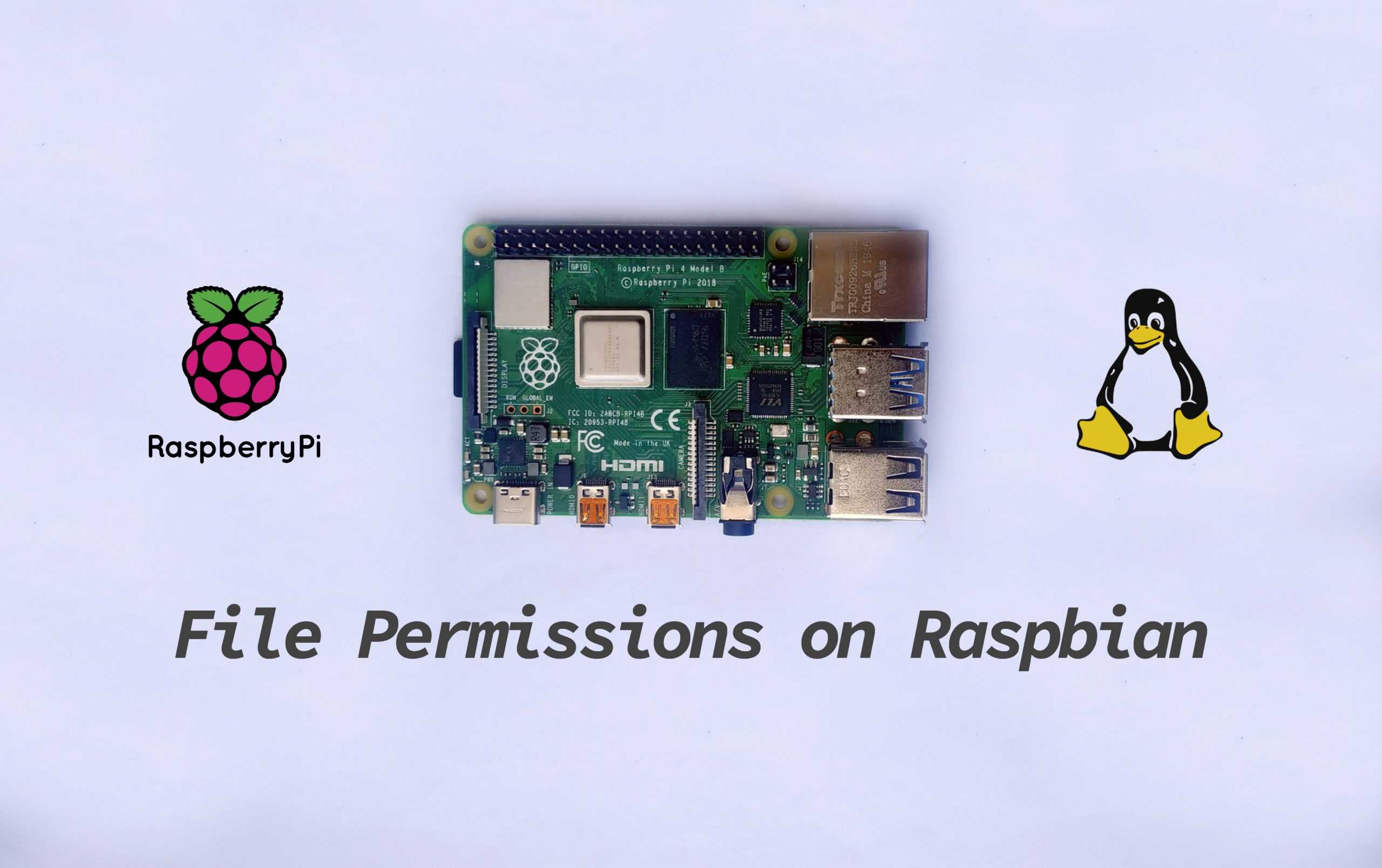


File Permissions On The Raspberry Pi Circuit Basics



Linux Modify The File Permissions Chmod Programmer Sought
Using octal syntax for chmod allows setting the absolute permissions for owner, group, and other in one quick command The syntax requires three octal digits, each representing the owner, group, and other permissions, respectivelyThe second digit selects permissions for the user who owns the file read (4), write (2), and execute (1);The command chmod changes the file mode bits of each given file according to mode, which can be either a symbolic representation of changes to make, or an octal number representing the bit pattern for the new mode bits chmod never changes the permissions of symbolic links;



Linux Permissions Explained Part 3 Octal And Numerical Permissions Youtube



Instructions
Chmod command is used in two ways 1 Using octal value & position Sets the permission for owner, group and others with octal values , 4 for read , 2 for write , 1 for execute and any sum of these number to get cumulative permissions chmod syntax using octal mode chmod OPTION MODE FILE 2 Using symbolic values to add, remove the file permissionThe chmod system call cannot change their permissionsFor instance, let's look at the testtxt file that we symbolically configured with the chmod u=rw,g=r,o=r testtxtcommand The same permission settings can be defined using the octal format with the command chmod 644 testtxt
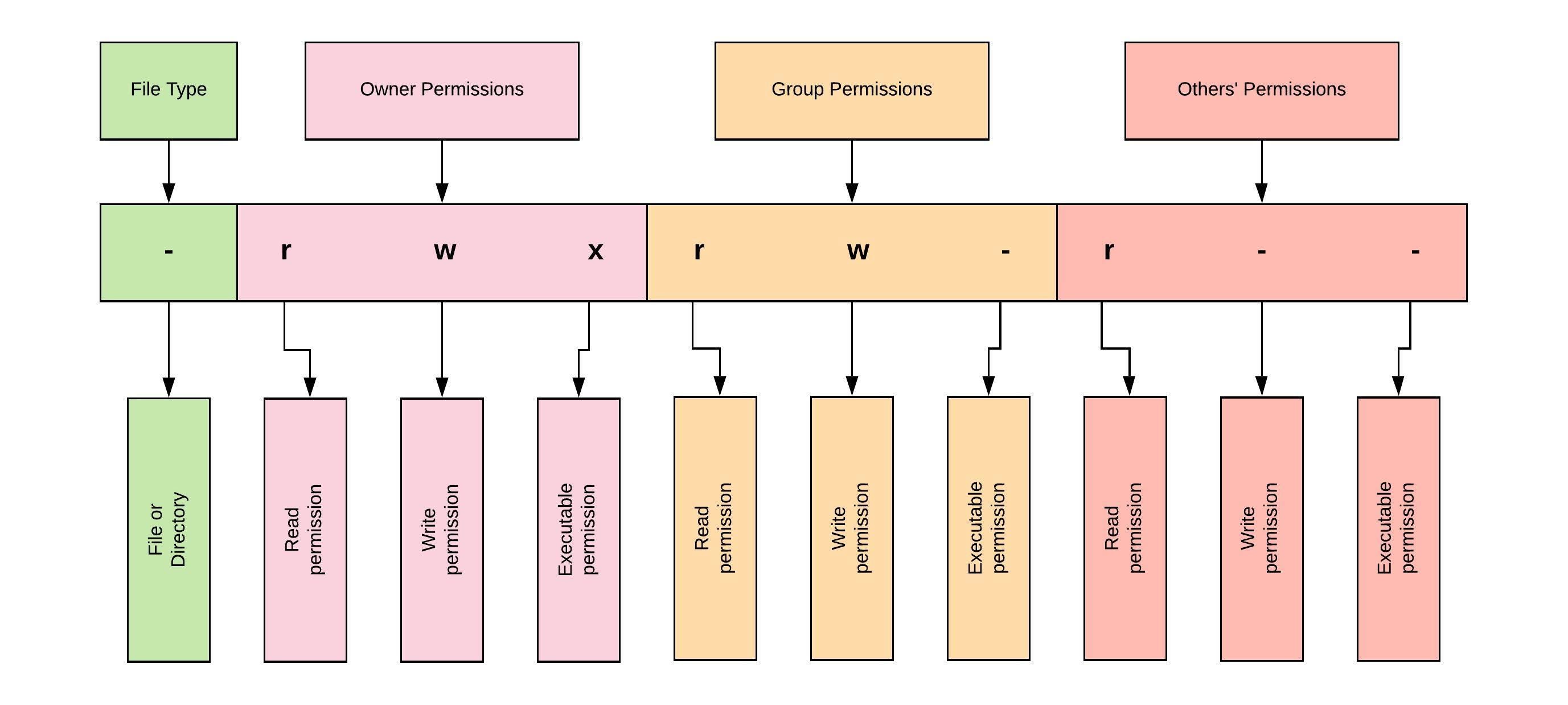


Linux File Permissions And Ownership By Udara Bibile Level Up Coding
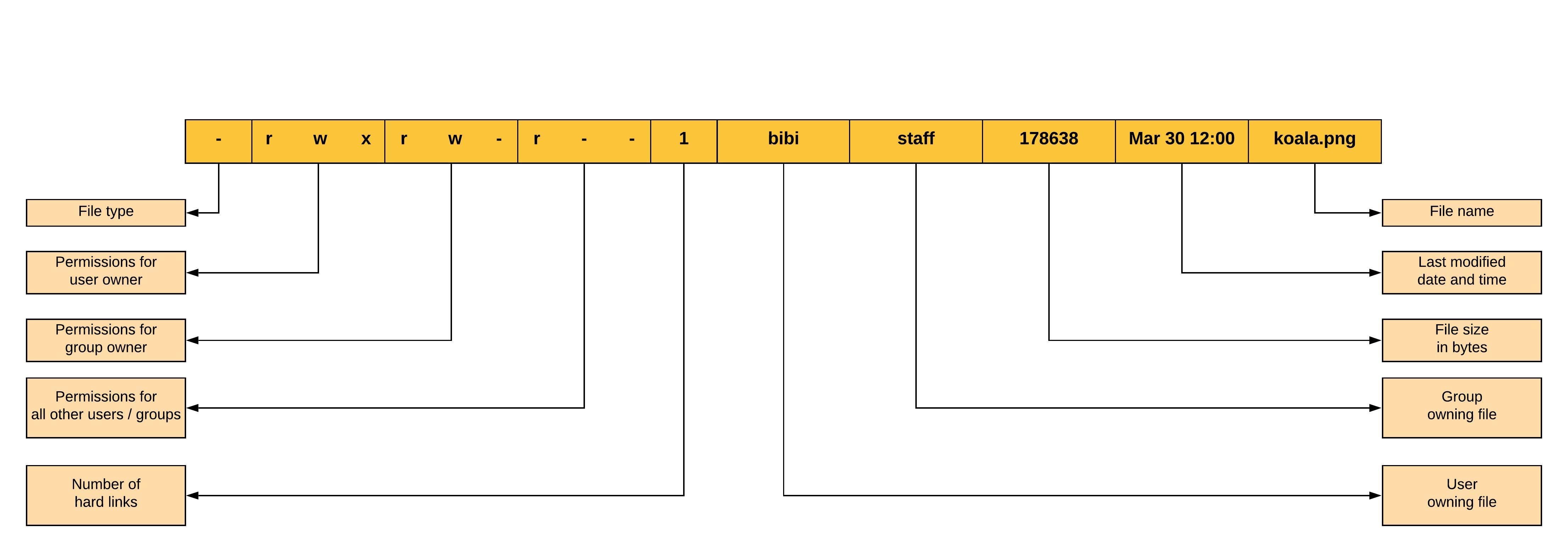


Linux File Permissions And Ownership By Udara Bibile Level Up Coding
Those appear to be radically different examples (they're not, actually)View (u)ser, (g)roup and (o)thers permissions for chmod 644 (chmod arwx,ux,gwx,owx) or use free online chmod calculator to modify permissions easilyChmod og= filename Give read, write and execute permission to the file's owner, read permissions to the file's group and no permissions to all other users chmod u=rwx,g=r,o= filename Add the file's owner permissions to the permissions that the members of the file's group have chmod gu filename



24 File Permissions Txt



Basic Linux Commands
Octal representation for Permissions We can present permissions as an octal number For example, for setting read, write & execute permissions for the owner, read & write permissions for its group, and no permission for others, to a hellotxt file, we will execute the following command sudo chmod 760 hellotxtChmod is a command line utility that is used for manually managing the access and permissions to files and directories on Linux, Mac, and other Unix like operating systems According to the man page document for chmod "The chmod utility modifies the file mode bits of the listed files as specified by the mode operand It may also be used to modify the Access Control Lists (ACLs) associated with the listed files"Chmod changes the file mode bits of each given file according to mode, which can be either a symbolic representation of changes to make, or an octal number representing the bit pattern for the new mode bits


Github Fed Command Line Cheatsheet Unix Command Line Cheatsheet



Chapter 10 Managing File Permissions Red Hat Enterprise Linux 8 Red Hat Customer Portal
Octal notation is a numerical system for modifying the permissions on Linux, Mac and other Unix like file systems Each octal permission can be represented by 3 or 4 numbers;Using the chmod command without specifying whether you want to change User, Group, or Other permissions (eg chmod x foo) causes chmod to use your umask to decide what sets of permissions to change The umask setting causes chmod to ignore changes for the masked permissionsThe command chmod changes the file mode bits of each given file according to mode, which can be either a symbolic representation of changes to make, or an octal number representing the bit pattern for the new mode bits chmod never changes the permissions of symbolic links;



Chmod X Explained Everything You Need To Know



Linux Command Line Cheat Sheet Kalitut
For instance, let's look at the testtxt file that we symbolically configured with the chmod u=rw,g=r,o=r testtxtcommand The same permission settings can be defined using the octal format with the command chmod 644 testtxtPermissions 0755 for '/home/etcssh/id_rsa' are too open It is recommended that your private key files are NOT accessible by others This private key will be ignored bad permissions ignore key then the FILE PATH in VAR/LIB/SOMEWHERE Now to work round this I then tried sudo chmod 600 ~/ssh/id_rsa sudo chmod 600 ~/ssh/id_rsapubChanging File Permissions The chmod command enables you to change the permissions on a file You must be superuser or the owner of a file or directory to change its permissions You can use the chmod command to set permissions in either of two modes Absolute Mode – Use numbers to represent file permissions (the method most commonly used to set permissions)



Linux Cheat Sheet



Unix Permissions File Permissions In Unix With Examples
Permissions are defined using octal permissions These are nine characters created in three sets of three characters Change the Permissions with chmod Chmod stands for change mode, and it is a basic syntax used to change the permissions of the file chmod permissions filenameTherefore, the chmod 665 myFiletxt command changes the permissions to Owner rw (6 or 110 in octal) Group rw (6 or 110 in octal) Other rx (5 or 101 in octal) What command would change the permissions of myFiletxt to rwxrwxrwx, granting any user in the system full access to the file?Chmod provides two types of syntax that can be used for changing permissions An absolute form using octal to denote which permissions bits are set eg 0777 The other, symbolic notation, which uses letters and symbols to define which permissions are set


I Made This Chmod Cheat Sheet And Thought It Might Be Useful Linux4noobs



Unix Permissions The Easy Way Index Of All Chmod Permutations By Semi Koen Towards Data Science
How do I manage permissions?Clears the selected permission field and sets it to the permission specified If you do not specify a permission following = , the chmod command removes all permissions from the selected field The third set of flags specifies the permissions that are to be removed, applied, or setPermissions 0755 for '/home/etcssh/id_rsa' are too open It is recommended that your private key files are NOT accessible by others This private key will be ignored bad permissions ignore key then the FILE PATH in VAR/LIB/SOMEWHERE Now to work round this I then tried sudo chmod 600 ~/ssh/id_rsa sudo chmod 600 ~/ssh/id_rsapub



Uli101 Week Ppt Download



Ppt Unix Files Powerpoint Presentation Free Download Id 5760
The chmod command modifies the permissions of a file or directory on a Linux system The three numbers after the chmod command represent the permissions assigned to user owner, group owner and others The numbers 755 assign readwriteexecute permissions to the user ower and readexecute permissions to group owner and othersUsing Numeric Modes With Chmod To set the permissions of a file or directory using numeric modes, simply use the format chmod OCTALMODE FILENAME where OCTALMODE is the octal form of the permissions For example, to set the permissions of filename to rwrryou could run the command chmod 644 filenameThe third selects permissions for other users in the file's group, with the same values;



Linux File Permissions Explained Learn Tech Tutorials



Chmod Octal Chart Zerse
So if you take the octal digit that expresses the permissions in each category, and you line them up in order, you get a threedigit octal number And there you have it How to set permissions with chmod in octal mode Instead of "u=rwx,go=rx", you would have "755" There are no relative assignments of permissions using octalThe general chmod command syntax is the same command permissions directory/file Here is an example How do I remove the read permissions from others for file2 by using symbolic mode?Changing file permissions with chmod command using octal notation To change file permissions of a file use the syntax below chmod octal value filename For example, to change file permissions of a file file1txt, to say rwrrexecute chmod 644 file1txt This is illustrated in the calculation below
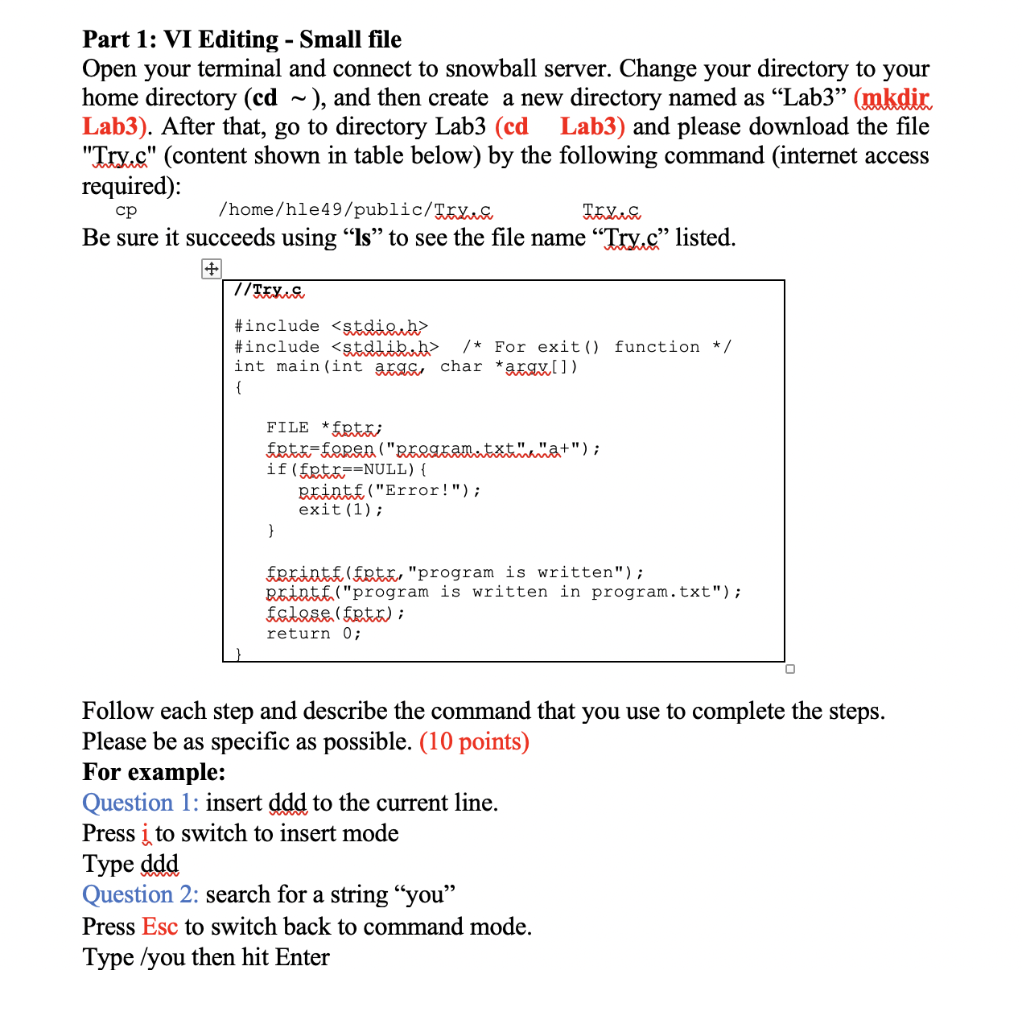


Please Help Me Out This All I Will Give You Helpf Chegg Com
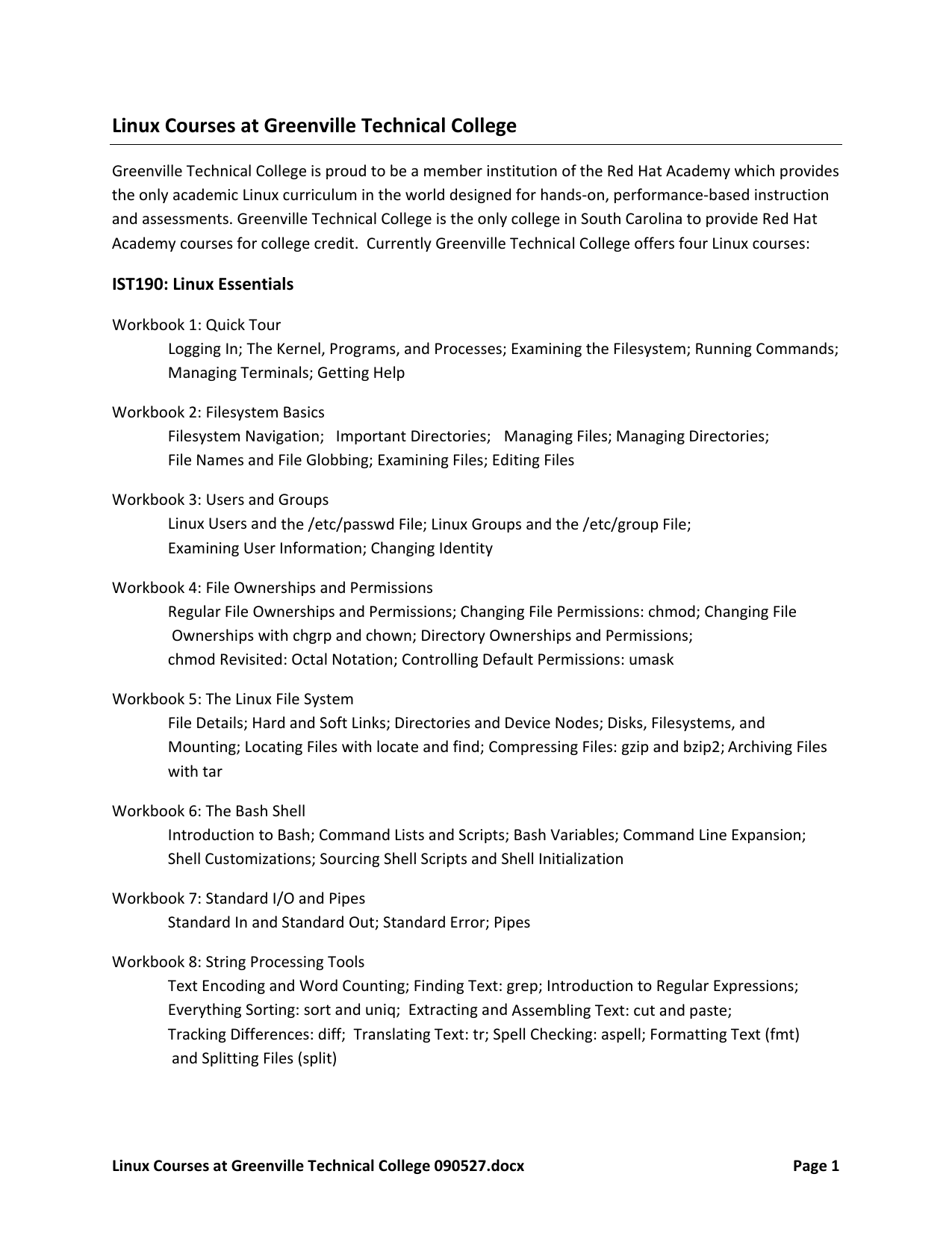


Linux Courses At Greenville Technical College
1) Symbolic way (s, Stands for Set) 2) Numerical/octal way (4) Use chmod command to set SUID on file file1txt Symbolic way chmod us file1txt Here owner permission execute bit is set to SUID with s Numerical way chmod 4750 file1txtYou must specify the mode symbolically or use an explicit 4character octal with a leading zero (for example, 0755) when removing the setgroupIDonexecution permission from directoriesThe chmod system call cannot change their permissions



Solved Chmod Can Be Used To Change The Mode Of The File Chegg Com



Chmod Octal Chart Zerse
Chown and Chmod commands for managing file permissions in Linux system Time:5 chown Usage chown options owner group file Or chown options — Reference = reference file Change the owner and / or group of each file When using the — referenbce parameter, change the owner and group of the file to be the same as the specified reference fileWhere each of these numbers is an "octal", meaning they range from 07 Click to see full answerThe change mode or chmod command sets permissions The syntax is straightforward chmod permissions resourcename Here are two examples of manipulating permissions for file2 # chmod 740 file2 # chmod u=rwx,g=r,orwx file2 But wait!
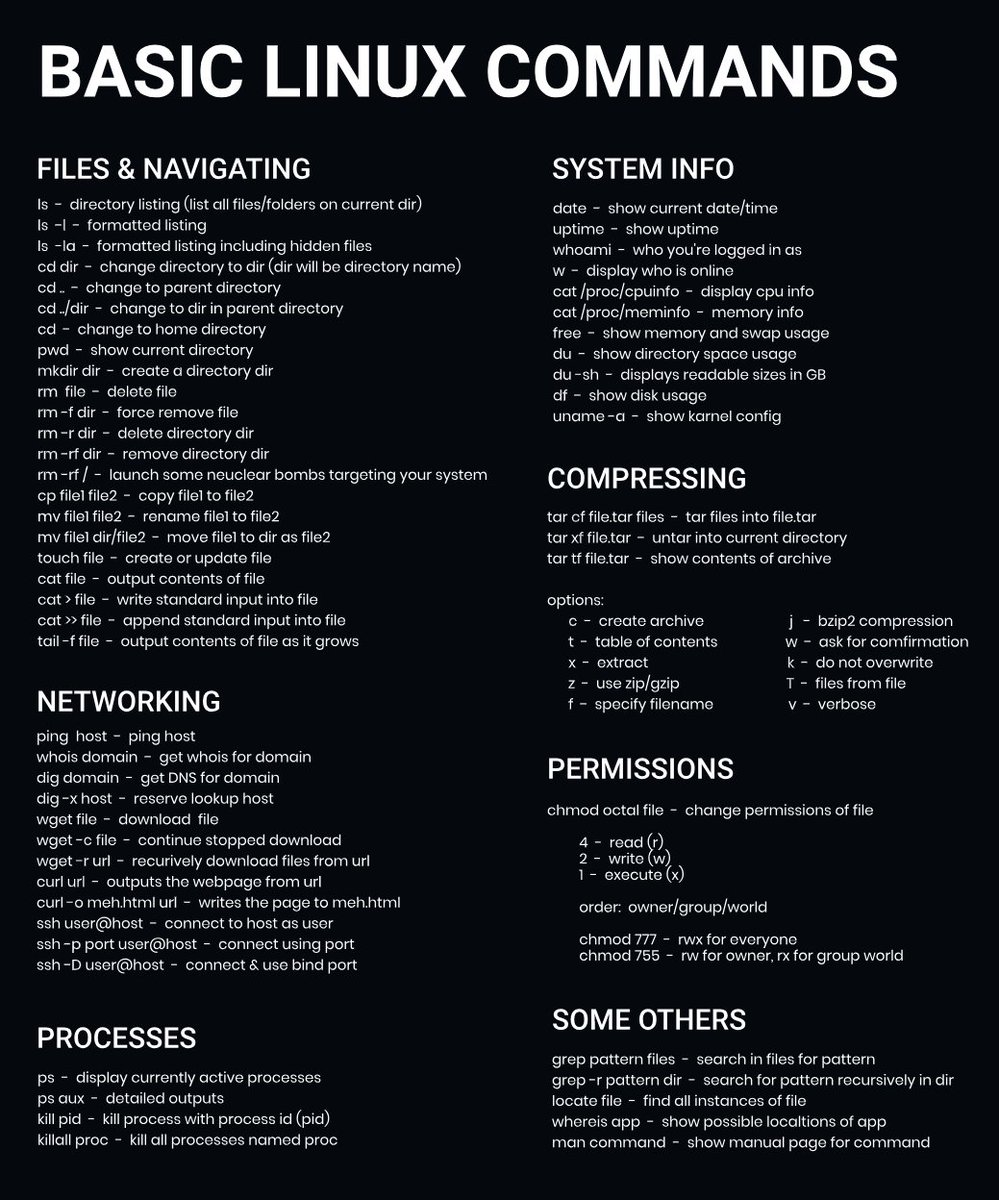


The Best Linux Blog In The Unixverse Basic Linux Commands Very Useful For New Linux Users Opensource
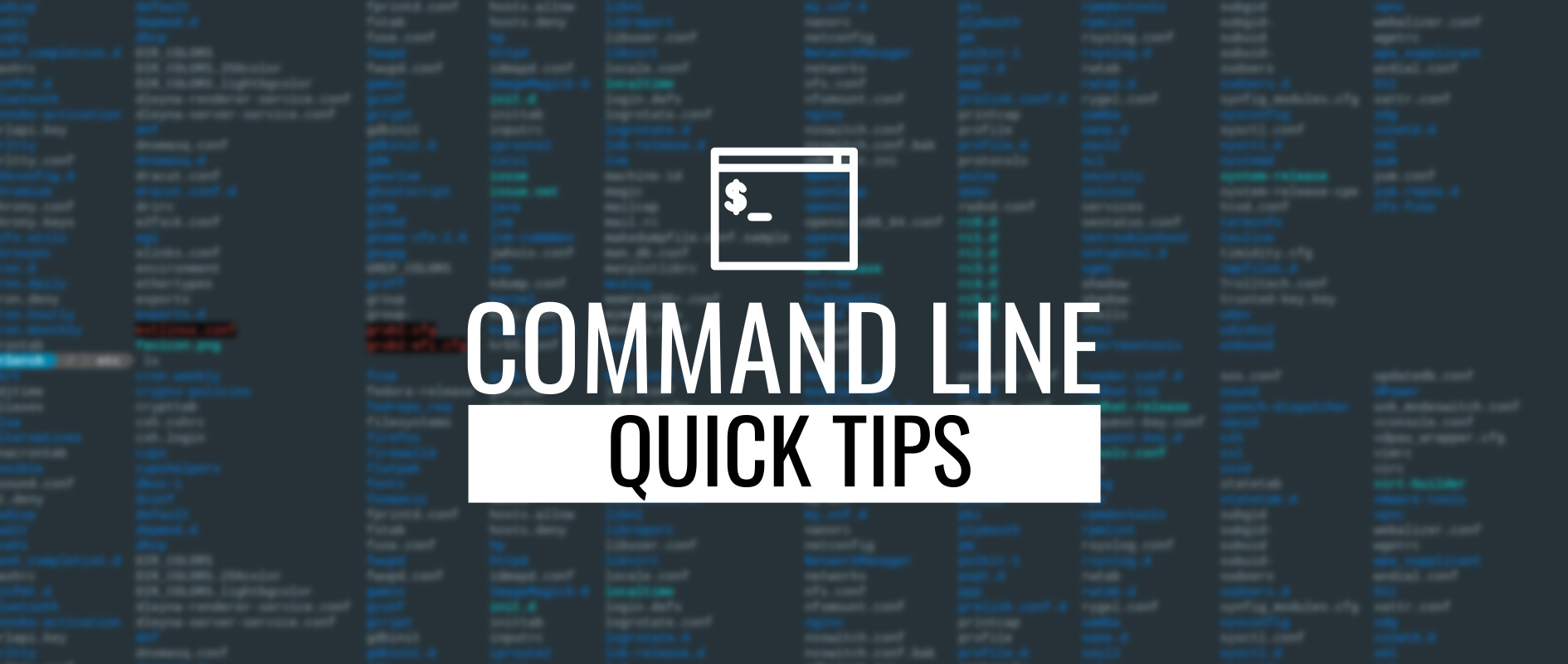


Command Line Quick Tips More About Permissions Fedora Magazine



Permissions And Executables A Primer For Computational Biology



Permission In Linux Permission Classes Chmod Command With Octal Symbolic Representation Youtube



Wordpress File Permissions A Guide To Securing Your Website
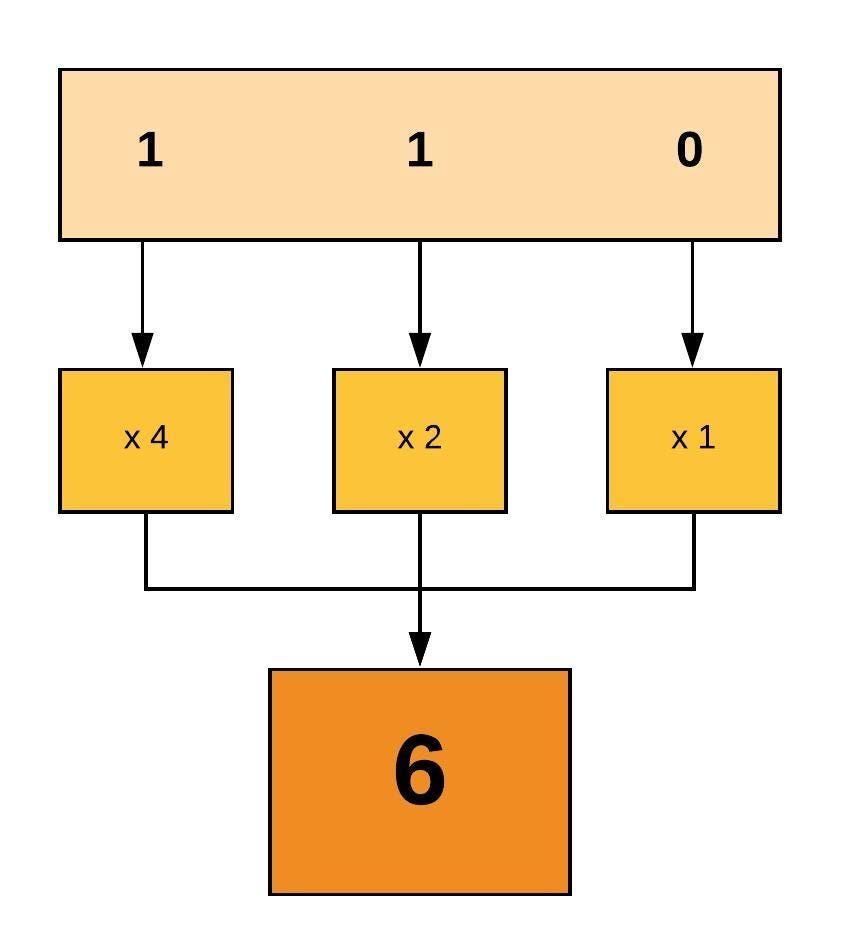


Linux File Permissions And Ownership By Udara Bibile Level Up Coding
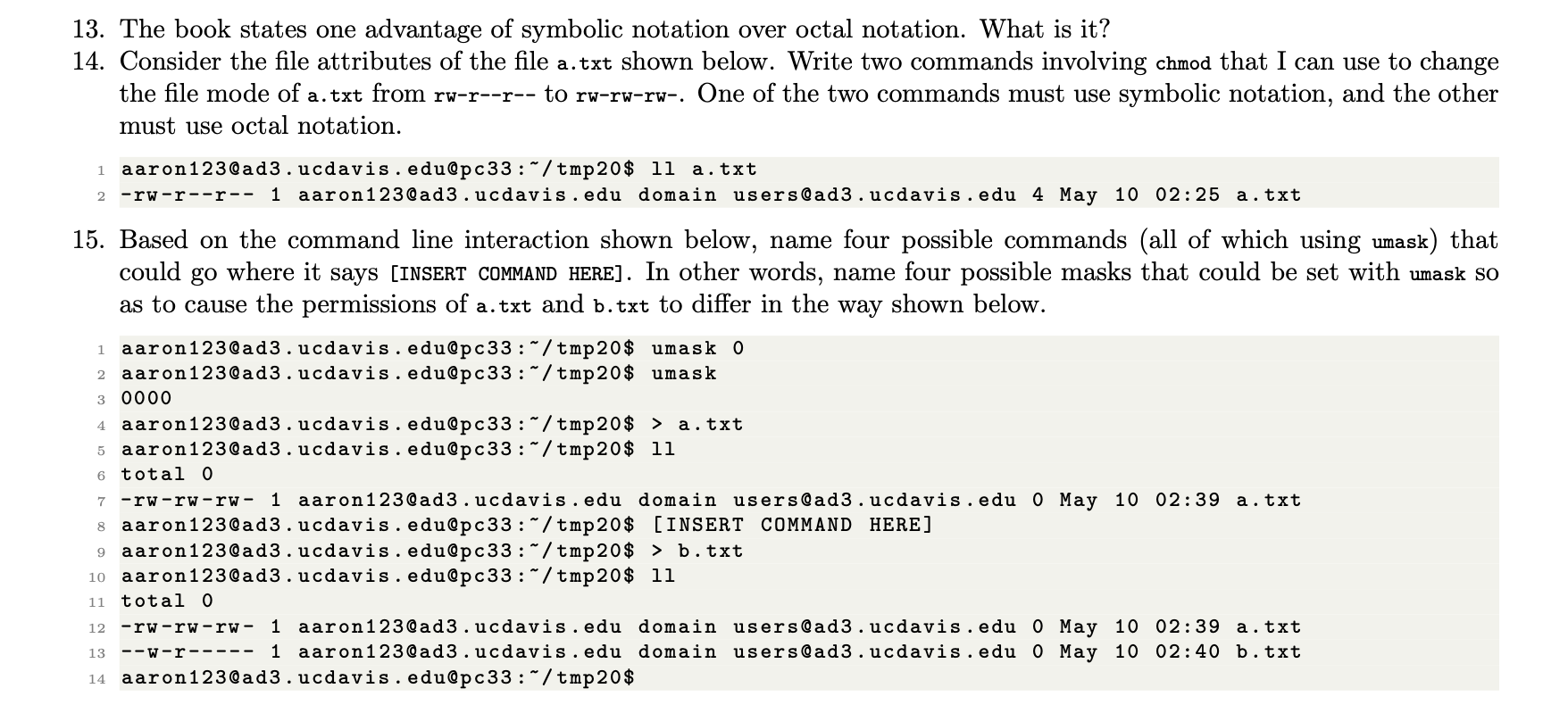


13 The Book States One Advantage Of Symbolic Nota Chegg Com
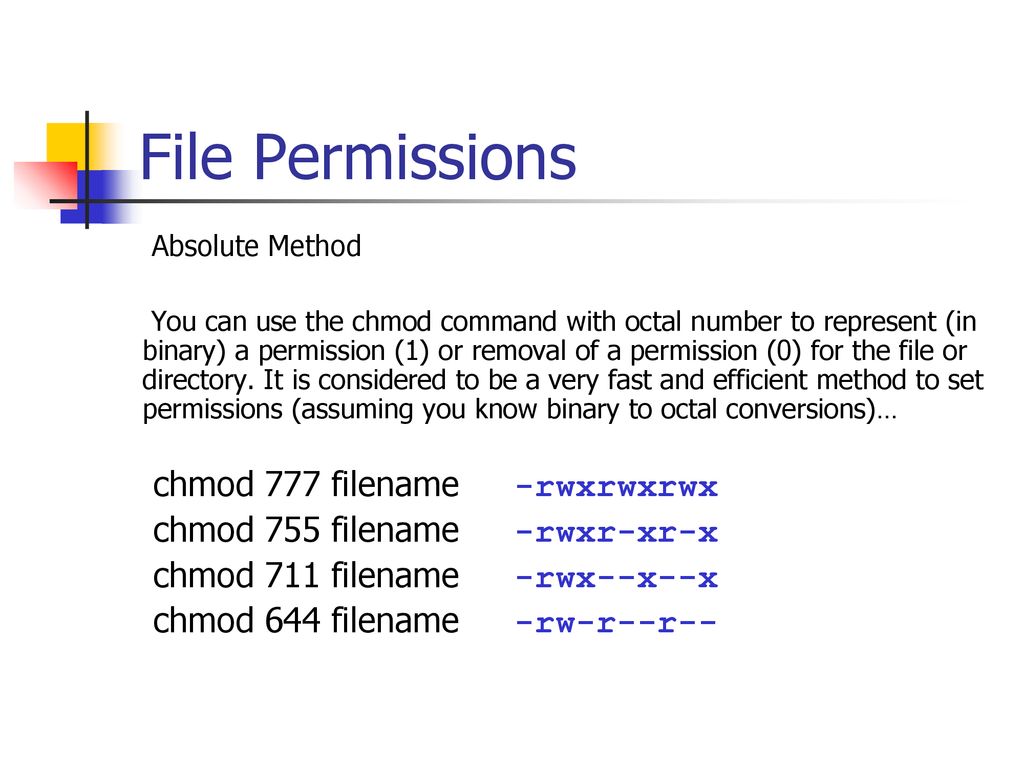


Bif703 File Permissions Ppt Download
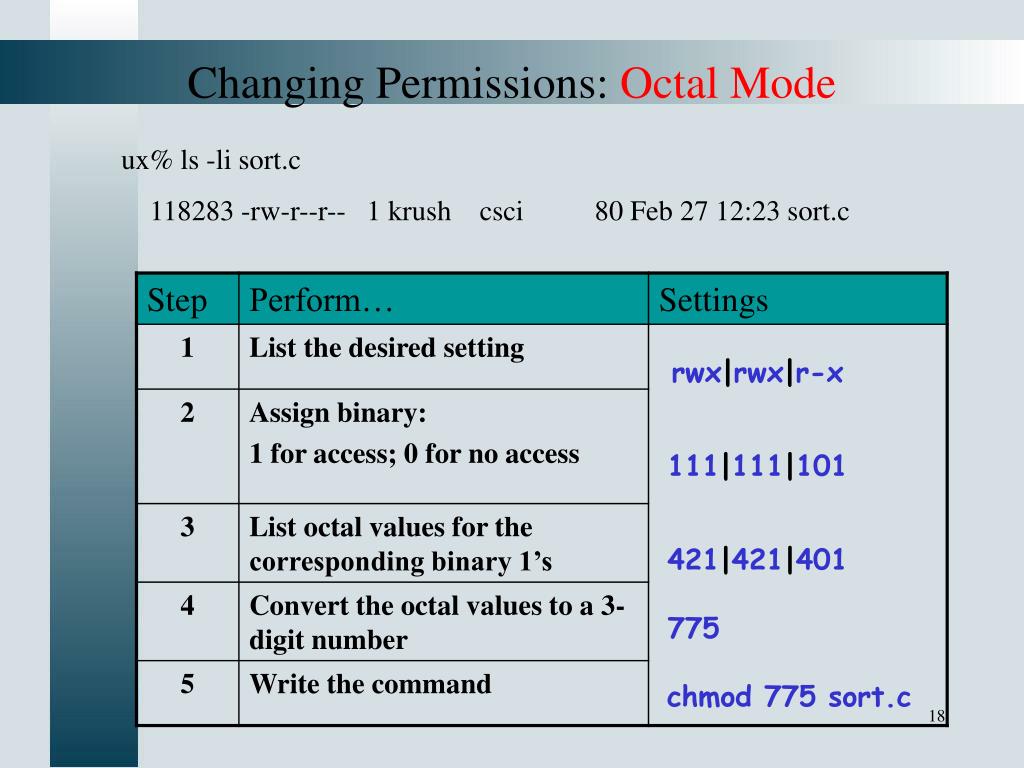


Ppt Access Permissions Powerpoint Presentation Free Download Id



Changing File Permission Using Octal Notation Youtube



Soc Linux Cheatsheet Secure Shell Computer File



Cmpsc 122 Lecture Notes Fall 17 Lecture 2 Chmod Octal Superuser
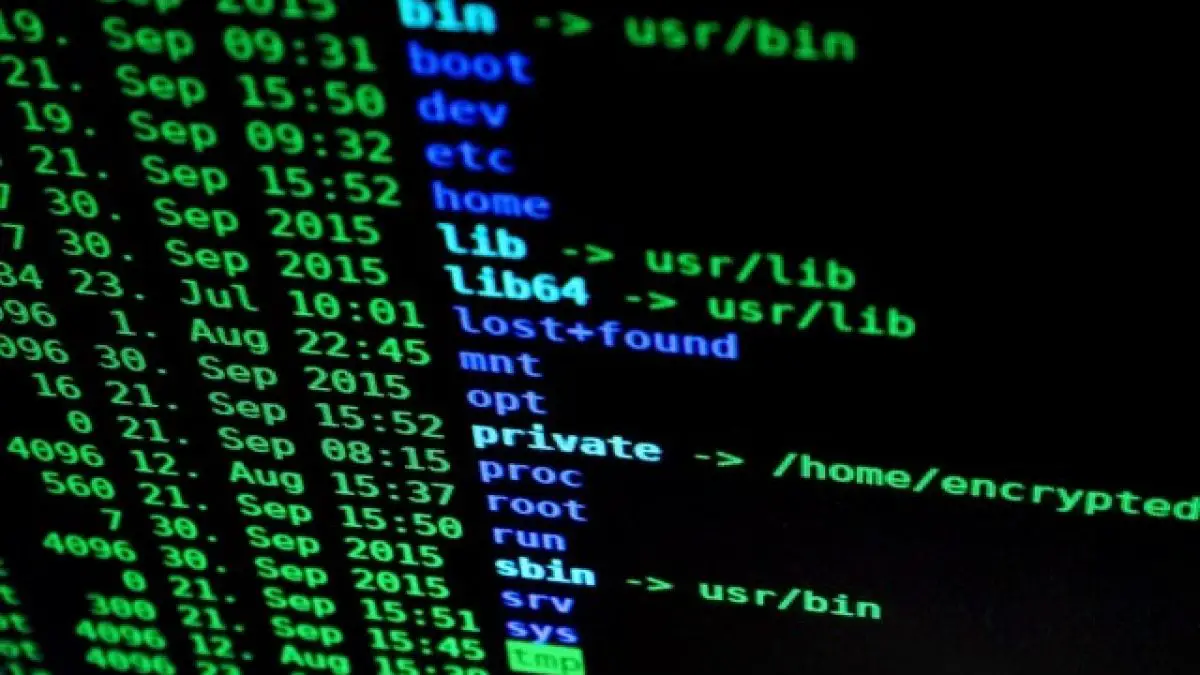


An Introduction To Linux File Permissions Boolean World



6 Best Linux Unix Command Cheat Sheet Linux Computer Coding Kids Computer



Chmod Easy File Access Permissions And Modification In Linux 5 0 Raviolican



Learn Basic Linux Commands With This Downloadable Cheat Sheet



Chmod Calculators On Codepen



Linux Chmod Command Summary With Examples Youtube
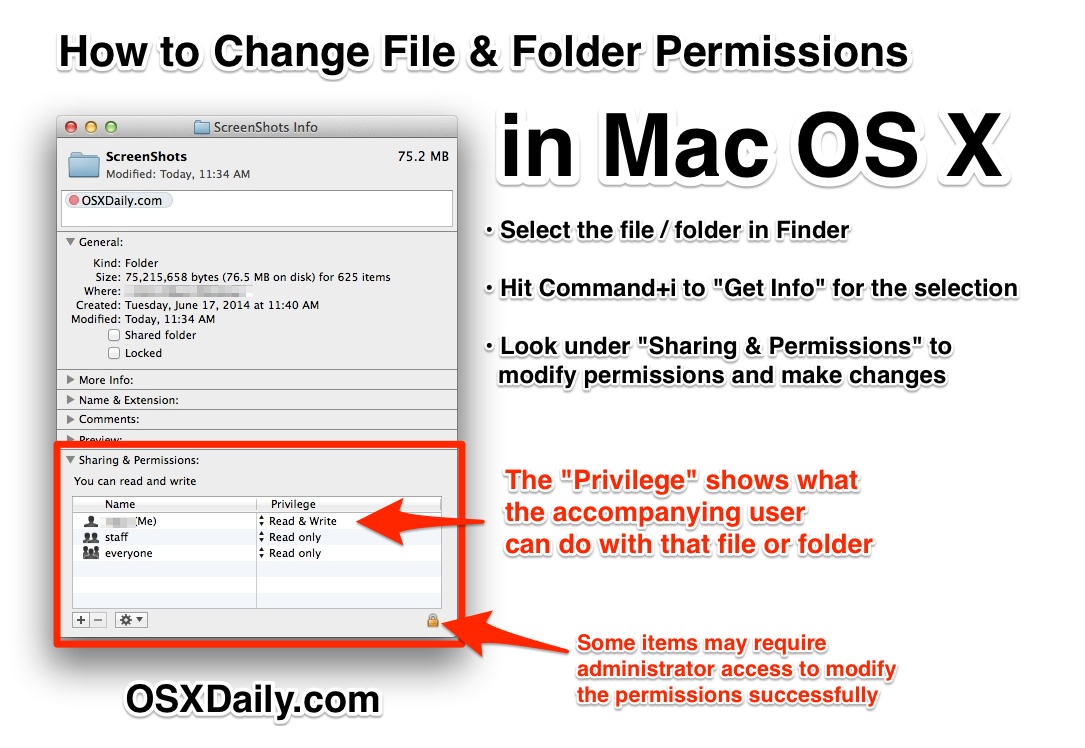


Change File Permissions In Mac Os X Osxdaily



Some Linux Commands Cheat Sheet Linux Gnu Os Open Source Software Linux Linux Mint Linux Operating System



Buffalo Linux Meetup Buffalo Ny Meetup
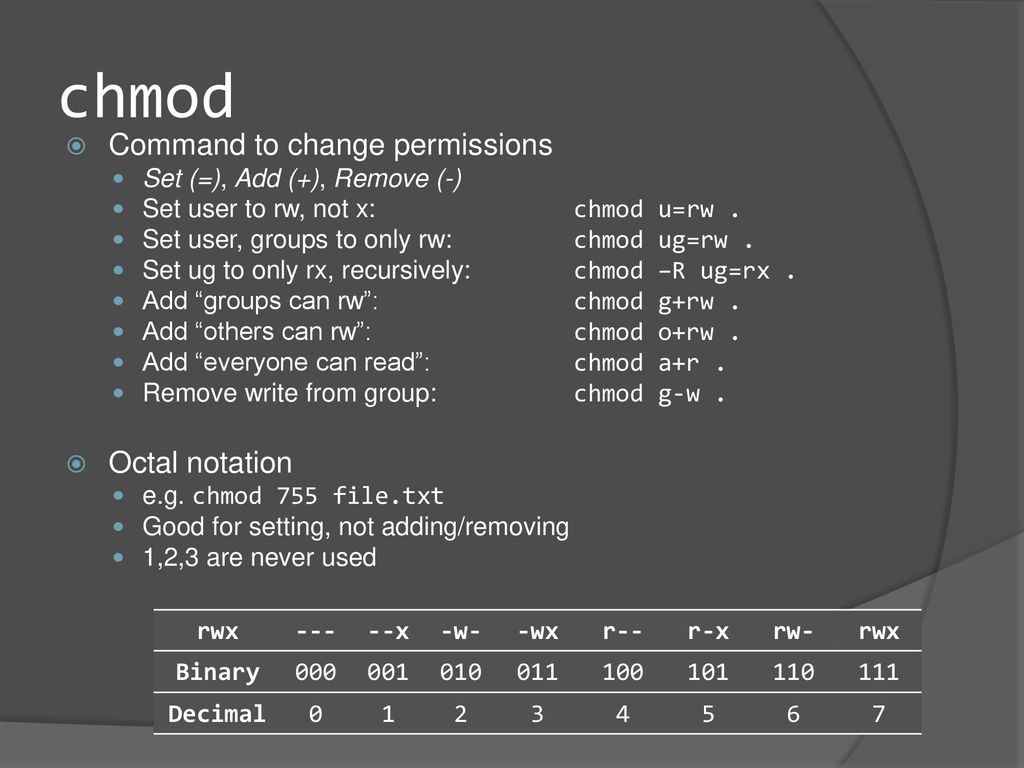


Engineering Secure Software Ppt Download



How To Use Chmod Command In Linux Explained With Examples
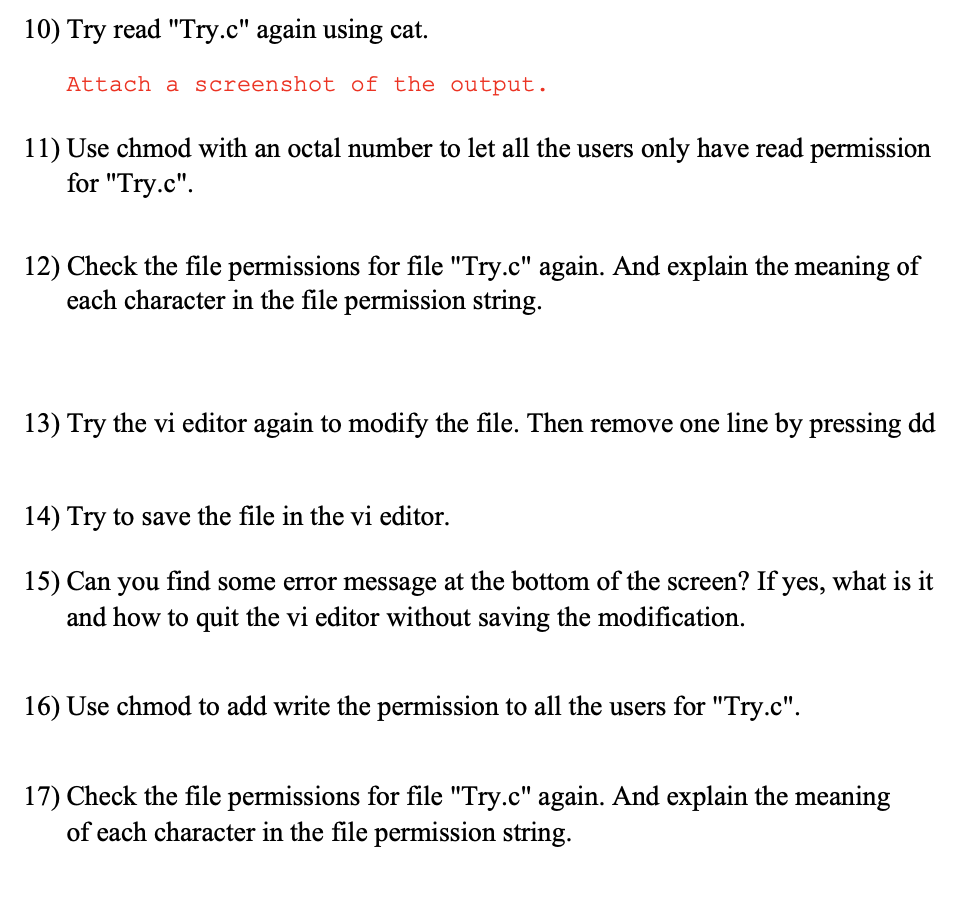


Solved Part 3 Permissions For Files Follow The Instructi Chegg Com






Linux Cheat Sheet Commands Pdf Download Printable



Change Permissions Linux Changing Permissions In Linux System Dev Community



Unix Permissions Ownership And Setuid File Security And Ownership The Chmod 1 Command Process Ownership Setuid Setgid And The Sticky Bit Writing Setuid Ppt Download



How To Manage File Permissions On Ubuntu Server 04 Dev Tutorial



Good Alternatives To Man Pages Every Linux User Needs To Know Linuxhowto Net



Added By Galpeartech Instagram Post Update And Refresh Your Linux Knowledge Follow Galpeartech Chmod Is One Of The Most Important Command Which You Can Use To Change The Permission In Linux System



Opensource Geeks Photos Facebook



How To Assign Permissions To Files And Folders In Cpanel Cpanel Blog



Command Line Basics File Permissions Alligator Io
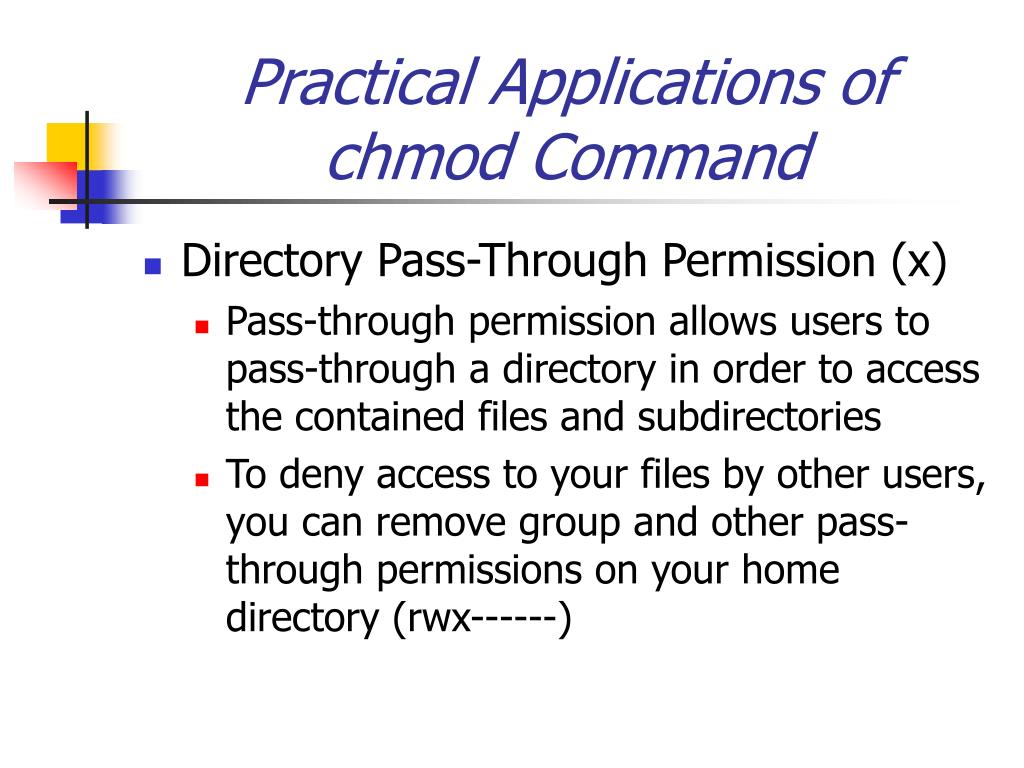


Ppt Agenda Powerpoint Presentation Free Download Id



Chmod 755 Command What Does It Do Codefather



Chmod 664
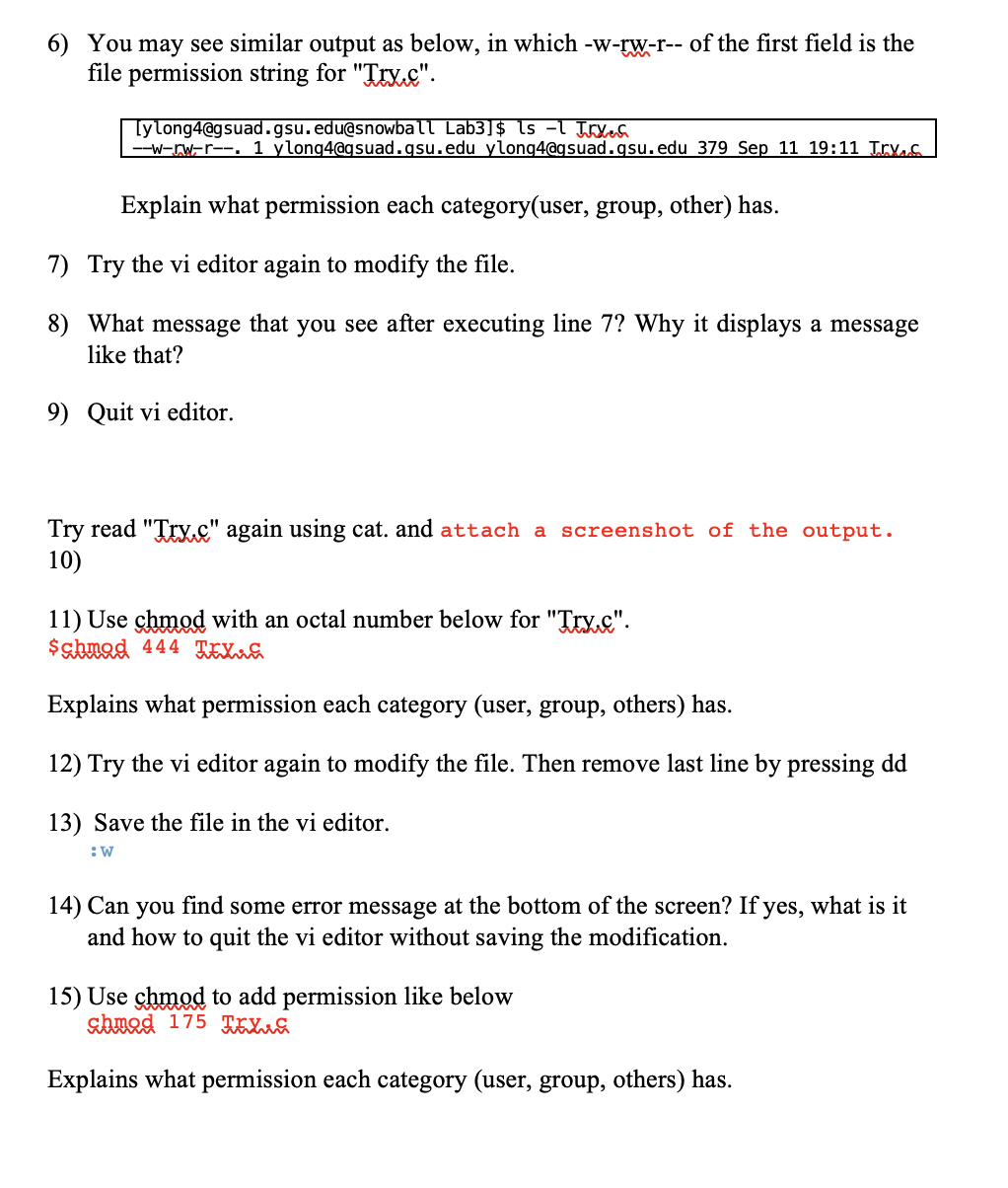


Please Help Me Out This All I Will Give You Helpf Chegg Com



Getting Started With File Permissions



Learn Linux Write Up Muirlandoracle Blog
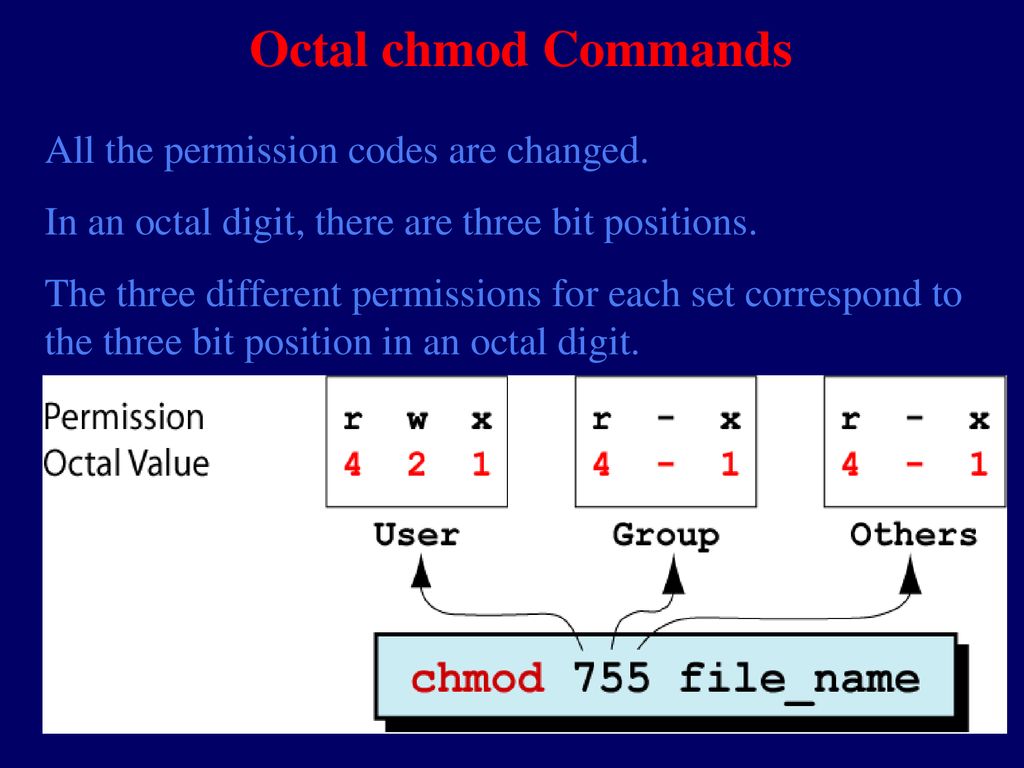


Security And File Permission Ppt Download



Linux Command Line 21 File And Directory Permissions Youtube


Give Write Access Chmod 775



How To Manage Linux Permissions For Users Groups And Others Enable Sysadmin



Ppt Agenda Powerpoint Presentation Free Download Id


I Made This Chmod Cheat Sheet And Thought It Might Be Useful Linux4noobs
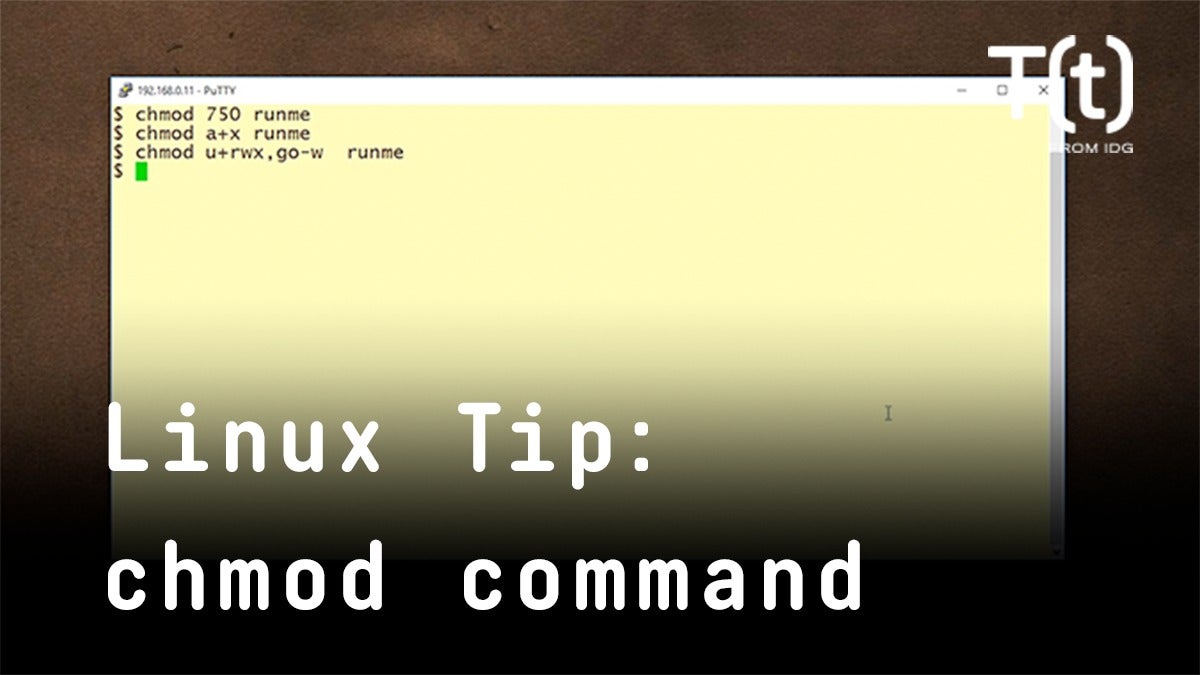


How To Use The Chmod Command 2 Minute Linux Tips Network World
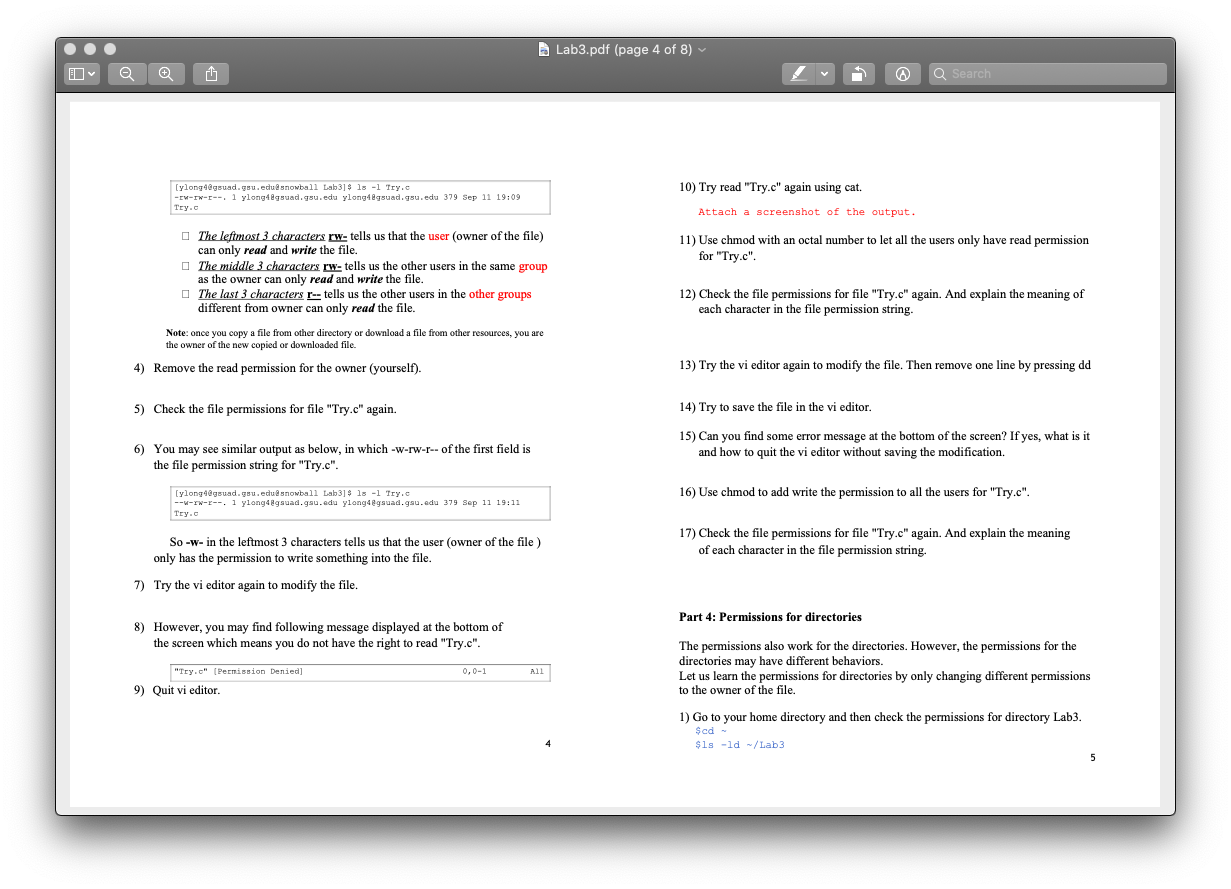


10 Try Read Try C Again Using Cat Attach A Scr Chegg Com
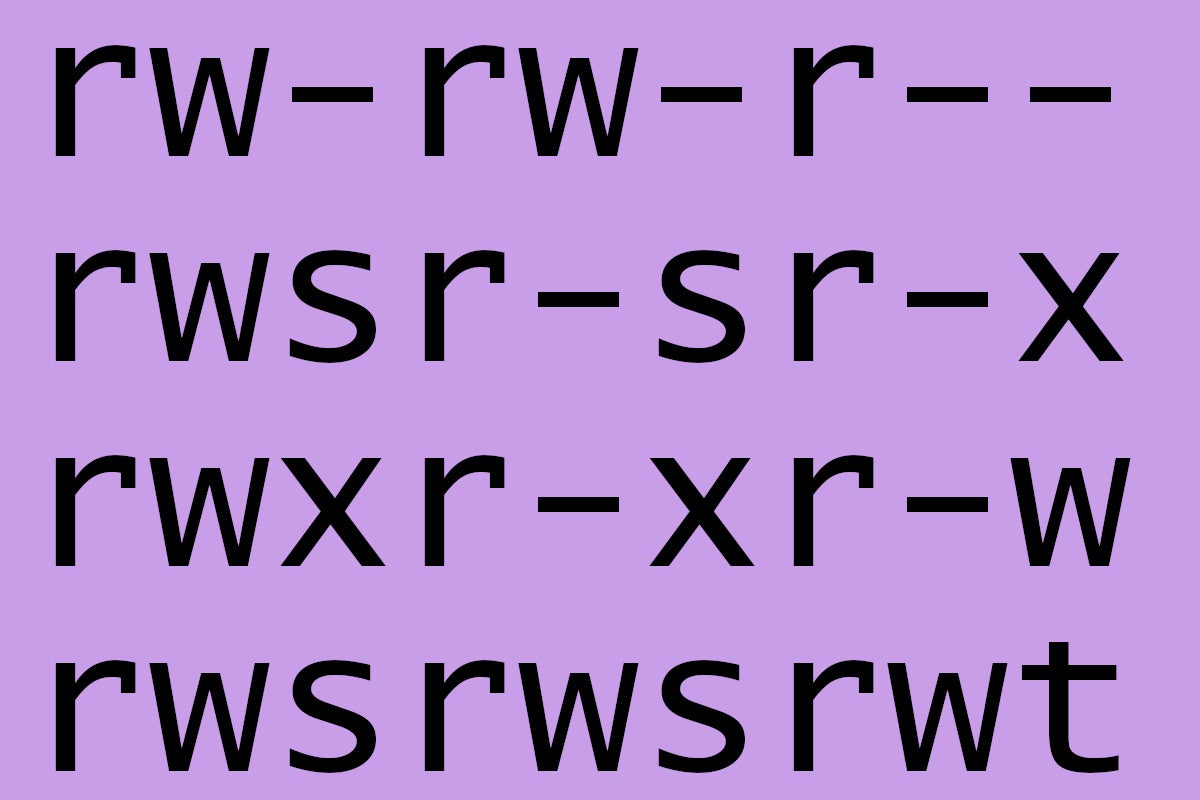


A Deeper Dive Into Linux Permissions Network World
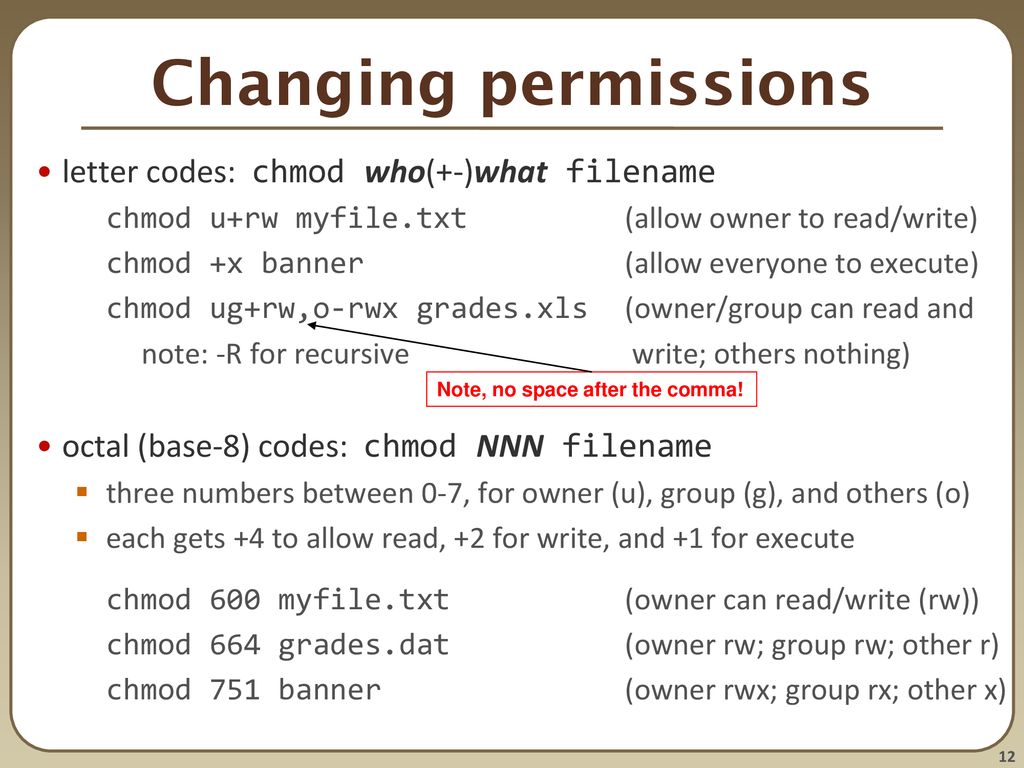


Persistent Shell Settings Users Groups Permissions Ppt Download



Basics Of Using Chown And Chmod Commands Anto Online



Uli101 Questions And Answers From Quiz 3 Studocu



When To Use Chmod Vs Chown
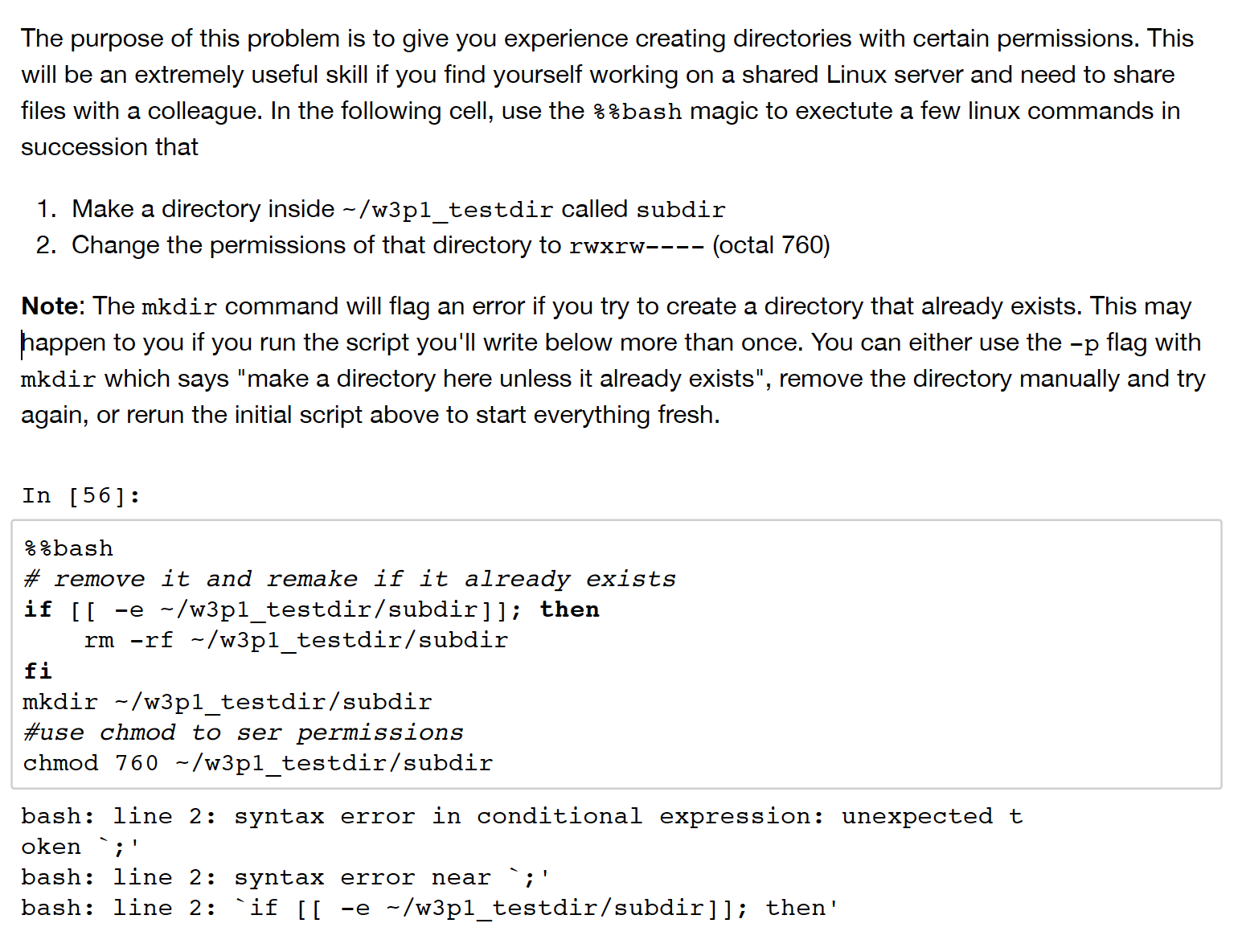


Solved File Permissions In Unix Command And Python I Hav Chegg Com



Explained How To Use Chmod Command Complete Guide Youtube
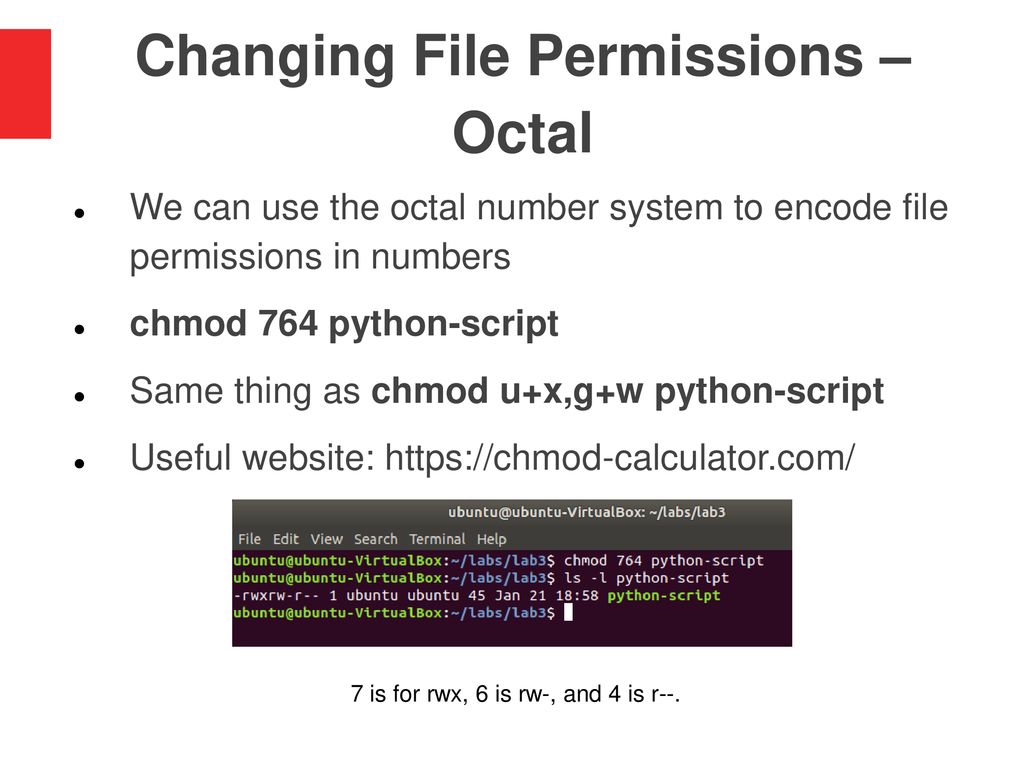


Lab 3 File Permissions Ppt Download



Unix Linux Permissions Calculator For Android Apk Download
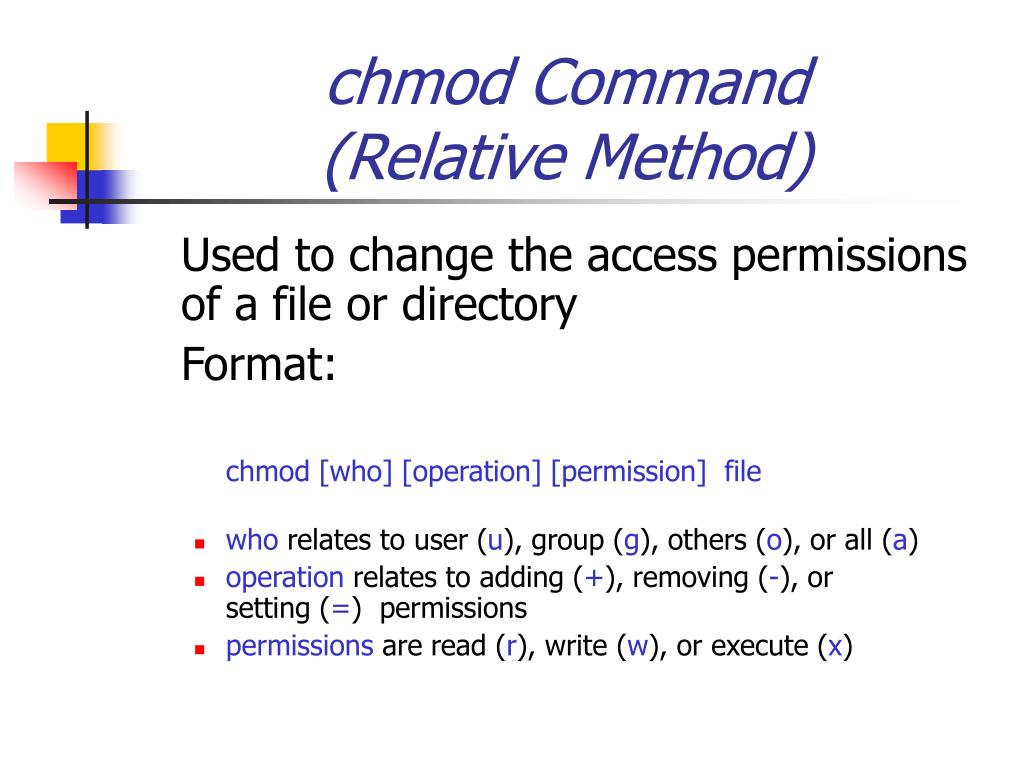


Ppt Agenda Powerpoint Presentation Free Download Id



Permissions And Executables A Primer For Computational Biology
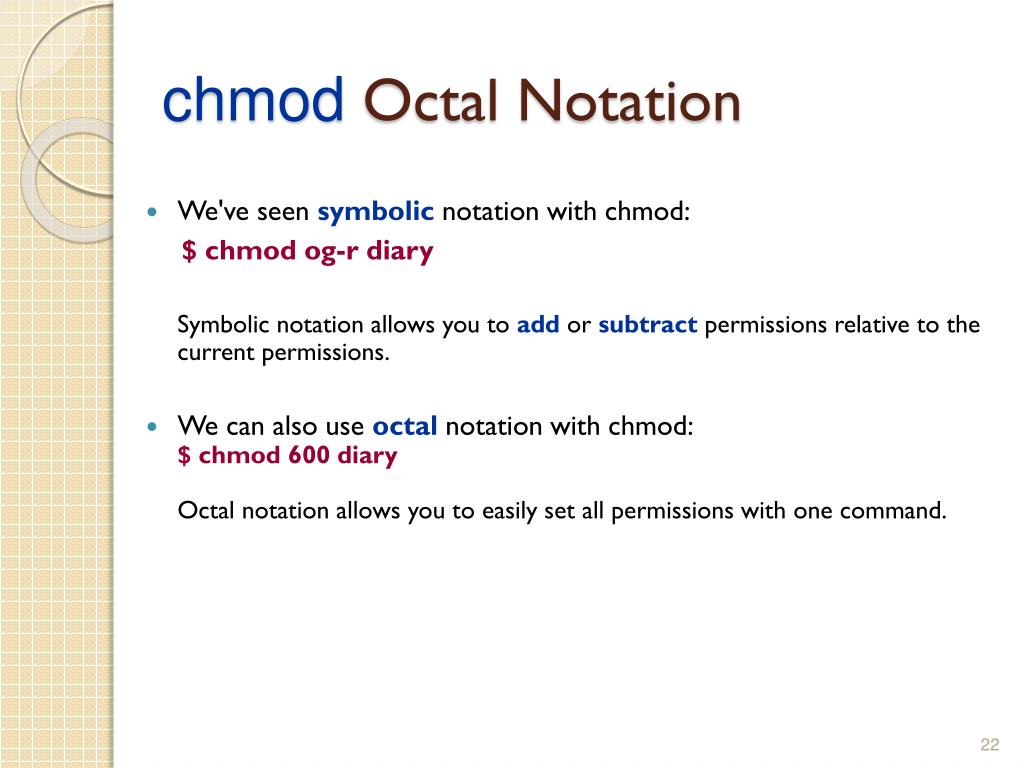


Ppt Information Systems Security Powerpoint Presentation Free Download Id



0 件のコメント:
コメントを投稿